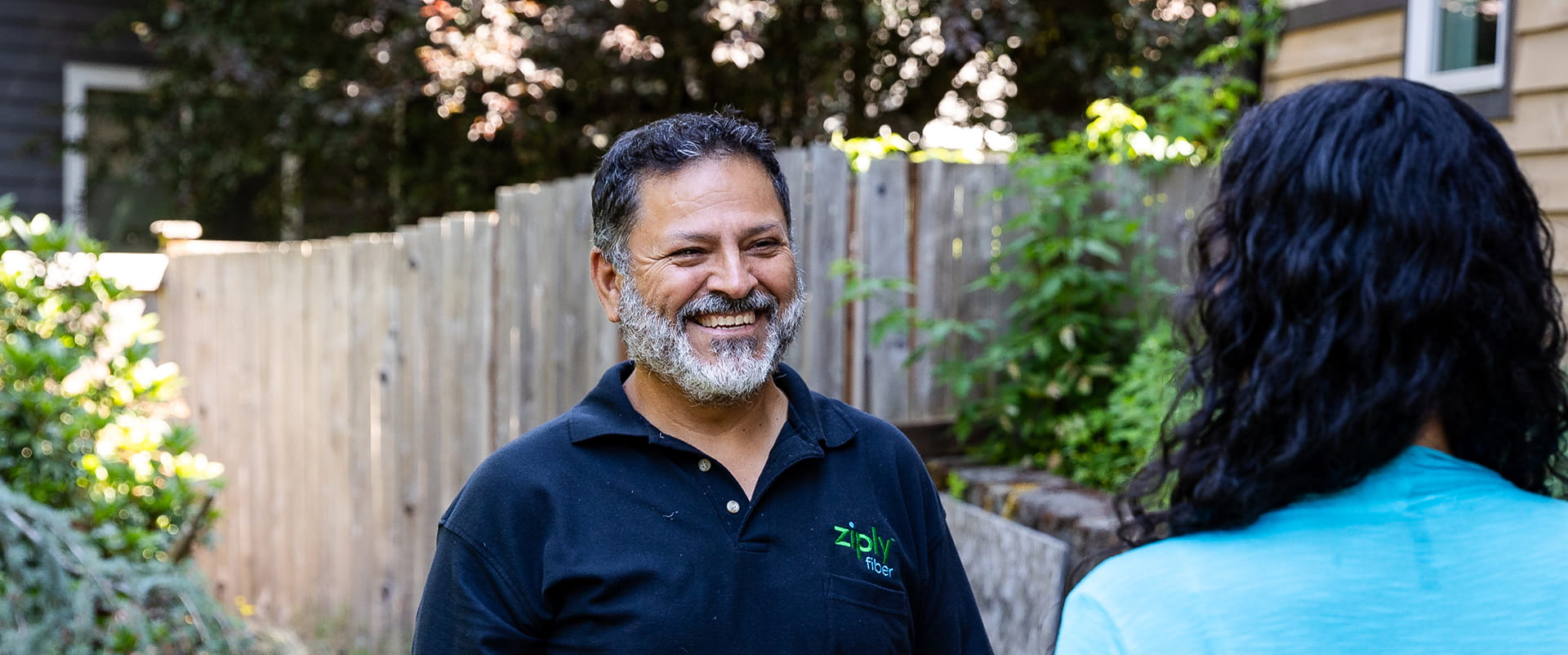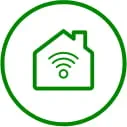Though it may look like a nondescript brick building, the Central Office is a critical part of networking infrastructure. At Ziply Fiber, the Central Office—CO for short—is the building that makes your internet connection possible. What’s unique about our COs? We sat down with our VP of Network, John van Oppen, to learn more.
Let’s start with the basics. What exactly is a Central Office (CO)?
A CO is the other end of your internet connection. It used to be copper wires that ran from your house to a CO, and now it's a fiber-optic strand. The CO is where all of the networking equipment lives. In dense areas, a single CO might serve tens of thousands of users, sometimes even more.
Customers connect to the CO via fiber that originates in cabinets in the field. These cabinets contain splitters—usually one fiber for 32 homes—and the fiber leads back to an Optical Line Terminal (OLT) in the CO. The OLT sources the light (the fiber-optic connection) going out to your house.

Why are Ziply Fiber’s COs unique?
The biggest difference is how we build and maintain them. Our infrastructure lives inside secure, climate-controlled buildings, not on utility poles or in roadside cabinets. That legacy comes from being a traditional phone company, where reliability was non-negotiable due to the need for emergency communication.
We’ve even had buildings survive wildfires while running on generator power, still delivering service. When the Detroit, OR fire happened, the building didn’t burn. The only reason we lost the roof was because a neighboring tree was untrimmed and caught fire and ignited the roof. Even then, the structure held.
That’s impressive.
Yes, well, the CO buildings have always been designed to support communication infrastructure. Whether it was for copper wires or fiber, the basics haven’t changed: high ceilings, cable racks, redundant cooling, backup generators, even underground diesel tanks. It’s all designed for resilience.
One of our most impressive buildings is our five-story facility in Everett, WA. That building has one of the highest floor load capacities I’ve ever seen outside of a warehouse. In some areas, it can support up to 450 pounds per square foot. To put it in perspective, we’ve got about 80,000 pounds of batteries on the fourth floor just sitting there in racks bolted to the floor. We’ve talked with our structural engineers about this—hypothetically, we could probably park a car or even put a printing press on the fifth floor, and it wouldn’t be a problem.

You’ve said your favorite room in the CO is the battery room. Why is that?
It’s such a unique part of telecom infrastructure. A typical data center might have 5–10 minutes of battery backup. Our sites usually have over three hours, and some have as many as twelve.
When something breaks, we don’t want to panic. We want to pause, talk through the plan and execute carefully. Battery reserves give us that luxury. We can afford slow, controlled responses. Customers don’t experience chaos, because we’ve built a system that’s calm under pressure.

And the COs have generators, too?
Yes. After a major windstorm last year, we had about 40 sites running on generator power. One of the most affected sites ran on generator for seven and a half days straight.
That’s key. If you’ve got two of everything on the network side, but your power isn’t reliable, nothing works. So, we invest heavily in base infrastructure. Consistency is a huge part of reliability.
You mentioned how we have “two of everything on the network side.” Explain what that means.
We build multiple fiber paths to every CO. So, if one line gets cut, your service doesn’t go down. We also run with a huge amount of headroom—no circuit is supposed to go over 40% usage. That way, we’re ready for the unexpected.

What’s an example of “the unexpected”?
A big Mike Tyson fight streamed on Netflix. It created a massive spike in traffic and took down service for a lot of providers. Not us. We had four times the needed capacity on standby, so our customers never saw a blip. When we need to add capacity, we just add cards to increase bandwidth. This is a real-world example of something that would happen inside the CO.
We actually do most of our network maintenance work during the day, because if your systems are designed well, daytime work doesn’t disrupt service.
At some point it’s got to give out, right?
We need to do maintenance, but otherwise, not really. I recently logged into a network device in rural Oregon that hadn’t been rebooted in 22 years. We just retired a voice switch that had been online without interruption for 42 years.
People talk about planned obsolescence, but we don’t build or operate that way. Our systems are built to last and to quietly do their jobs, day after day. That’s what reliability really looks like.
Any final thoughts on COs you want to leave readers with?
Just that COs are the unsung heroes of connectivity. They’re the central hub of everything we deliver and designed to stay up when everything else is down. There was a big power outage in downtown Bothell, WA, and our CO was the only one with lights on. It’s that kind of reliability that keeps our customers connected, even in a crisis.
Want to learn even more about our COs? Take a virtual tour on YouTube, and join our Reddit community for a possible chance to tour one in person.







